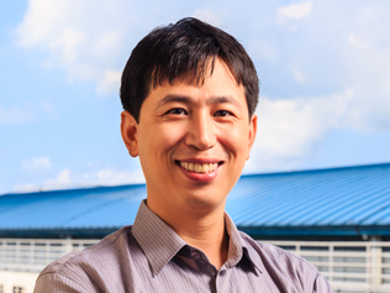Dr. Kate Lawrence, Deputy Editor of ChemElectroChem, talks to Professor Qing Wang, National University of Singapore, about his recently published article on improving photoelectrochemical cells (PECs) by grafting the surface with a molecular relay. Using this modification, the PECs are able to perform overall water splitting instead of only hydrogen generation.
What was the inspiration behind this study?
By mimicking natural photosynthesis, sensitized mesoscopic photoelectrochemical (PEC) cells provide an elegant platform for hydrogen generation, but unfortunately, they suffer from severe stability issues. Therefore, the main inspiration behind this study was a desire to understand the fundamental problems and address the challenges of PEC cells for hydrogen production.
What distinguishes your work from other systems that have been reported in recent years?
Most studies use Na2S/Na2SO3 as the electrolyte for semiconductor-sensitized PEC cells. However, considering the fact that interception of the photogenerated holes does not induce oxygen evolution, it is not H2O, but rather H2S that is split in sulfide-electrolyte-based PEC systems. Moreover, the reaction of S2– in the electrolyte is irreversible (non-regenerative), restricting its long-term application for hydrogen generation.
Therefore, it is important to employ a non-sacrificial electrolyte, but little work has been done in this area because of the difficulties in solving semiconductor photocorrosion problems. In this study, we report an effective approach to enhance the photocurrent and photostability of CdS-sensitized PEC cells by grafting the CdS interface with a redox molecular relay, 4-(N,N-diphenylamino)benzoic acid (DPABA). This is the first time that semiconductor-sensitized PEC cells have been demonstrated in a non-sacrificial electrolyte to be able to accomplish overall water splitting.
Why was your attention focused on this particular area?
Sensitized mesoscopic PEC cells mimic the photosynthesis of green plants in a beautiful way in terms of photogeneration and charge separation. Although great success has been achieved with the previously mentioned PEC cells for photovoltaic applications, little progress has been made to directly utilize sunlight and store it in the form of chemical energy through an uphill reaction.
We were curious to understand the reasons behind this and discovered that it is the sluggish charge separation that dictates the operation of semiconductor-sensitized PEC cells for overall water splitting. Fortunately, we found a way to channel the photo-generated holes, which are harmful to the stability of sensitizers, to a temporary “sink” – the relay molecules – for the desired reactions.
How long do you think it will be before this theoretical result becomes a reality?
There is certainly some work to do before it becomes a reality, although the concept has been successfully demonstrated. We provide an approach in this study that we believe is intriguing and should be further explored. It depends on how fast the following issues can be addressed in future studies: the stability of relay molecules on the semiconductor sensitizer, and the catalytic activity of the relay molecules towards oxygen evolution reactions.
What is the broader impact of this paper for the scientific community?
This work provides an example, yet again, of the paramount importance of interfacial engineering. In addition, although intra- and intermolecular charge transfer have been broadly investigated, heterogeneous charge transfer between functional materials and redox mediators (including those grafted on the material) deserves more attention. This may lead to various interesting applications, such as redox targeting of battery materials for energy storage.
Thank you for the interview.
- A Molecular Relay-Modified CdS-Sensitized Photoelectrochemical Cell for Overall Water Splitting,
Chao Shen, Chin Sheng Chua, Yee-Fun Lim, Jie Liu, Xingzhu Wang, Bin Liu, Qing Wang,
ChemElectroChem 2016.
DOI: 10.1002/celc.201600273




